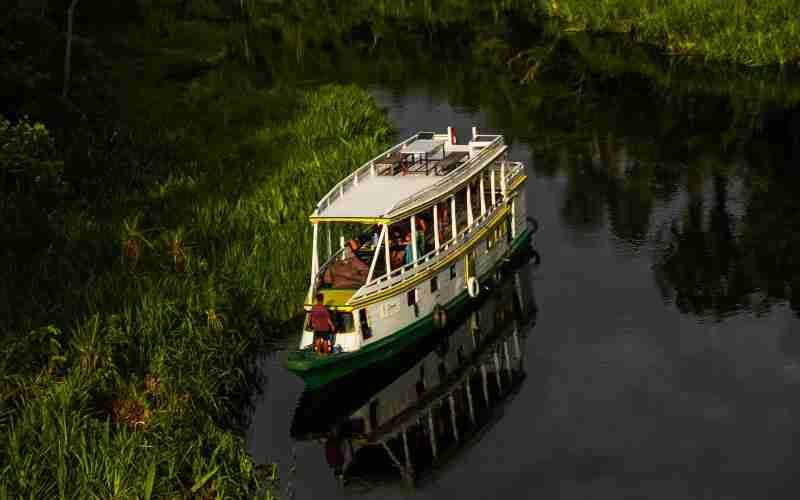Orangutans Indonesian Borneo

Strong 8k brings an ultra-HD IPTV experience to your living room and your pocket.
Deep within the lush rainforests of Borneo, the third-largest island in the world, swings one of nature’s most intelligent and awe-inspiring creatures the orangutan. Found only in the wilds of Borneo and Sumatra, these great apes are native to Indonesia and Malaysia. The Indonesian portion of Borneo, known as Kalimantan, plays a crucial role in the survival of this endangered species. This article delves into the life of the Orangutans Indonesian Borneo, the challenges they face, and the ongoing efforts to protect their existence.
Who Are the Bornean Orangutans?
The Bornean orangutan (Pongo pygmaeus) is one of three orangutan species, the others being the Sumatran (Pongo abelii) and the Tapanuli (Pongo tapanuliensis). Bornean orangutans are distinguished by their larger size and darker, red-brown hair. Adult males can weigh up to 100 kilograms (220 pounds) and have large cheek pads known as flanges.
These great apes are highly intelligent, solitary creatures who live in the treetops of tropical rainforests. They build nests from branches and leaves to sleep in every night and primarily eat fruit, though their diet also includes leaves, bark, insects, and occasionally bird eggs.
Habitat and Distribution in Borneo
Orangutans in Indonesian Borneo inhabit lowland forests, peat swamp forests, and mountainous regions. Kalimantan, the Indonesian side of the island, is home to the majority of the Bornean orangutan population. The forests of Central and East Kalimantan are particularly rich in biodiversity, providing ideal environments for these arboreal creatures.
Unfortunately, orangutan habitats are rapidly shrinking due to human activity. Logging, palm oil plantations, mining, and infrastructure development have led to severe deforestation, fragmenting the forest and isolating populations.
Threats to Survival
The Bornean orangutan is classified as Critically Endangered by the International Union for Conservation of Nature (IUCN). The population has declined by more than 50% over the past 60 years, and the numbers continue to fall.
The primary threats include:
Deforestation: Large-scale deforestation for palm oil and timber industries has wiped out vast areas of orangutan habitat.
Illegal Wildlife Trade: Baby orangutans are often captured and sold as pets. Their mothers are usually killed in the process.
Human Wildlife Conflict: As forests shrink, orangutans are forced into agricultural lands, leading to conflict with humans.
Fires: Forest fires, often set intentionally to clear land, destroy critical habitat and directly harm orangutan populations.
Conservation Efforts in Kalimantan
Despite the challenges, numerous conservation efforts are underway in Borneo. Several NGOs and local authorities are working tirelessly to rescue, rehabilitate, and reintroduce orangutans into the wild. Prominent organizations include:
Borneo Orangutan Survival Foundation (BOSF): Based in Kalimantan, BOSF operates rescue and rehabilitation centers and works with local communities to promote sustainable forest use.
Orangutan Foundation International (OFI): Founded by Dr. Biruté Mary Galdikas, OFI focuses on research, conservation, and education.
World Wildlife Fund (WWF) Indonesia: Supports anti-poaching patrols, habitat restoration, and policy advocacy.
Eco-tourism is also being promoted as a sustainable alternative to forest exploitation. Tourists can visit sanctuaries such as Tanjung Puting National Park, where they can observe orangutans in their natural environment.
Conclusion
The orangutans of Indonesian Borneo are not only a symbol of the rainforest’s rich biodiversity but also a reminder of our responsibility to protect the planet. While the threats to their survival are severe, the dedicated efforts of conservationists, researchers, and local communities offer hope. Preserving the Bornean orangutan and their habitat is crucial not only for the species itself but for the health of the entire ecosystem. If we act now, future generations may still have the privilege of witnessing these "people of the forest" thriving in the wild.
Note: IndiBlogHub features both user-submitted and editorial content. We do not verify third-party contributions. Read our Disclaimer and Privacy Policyfor details.



